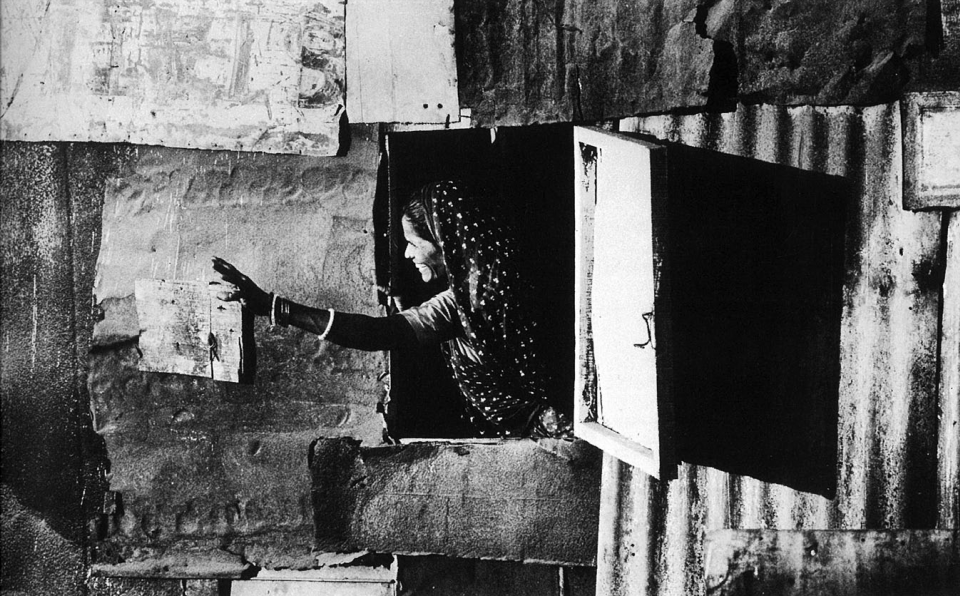The decisive phenomenon of the urban scene over the last two decades has been the growth of the zhopadpattis, caused by distress migration from the villages. The squatters live a wretched existence, in niches and crevices all over the city, building with whatever materials come to hand. Yet even in this elemental struggle for survival, surface two opposing sets of mythic images. The first: the expression of age-old symbols – the tulsi plant, the wayside shrine. The second: a new set of images reflecting new aspirations – the T.V. set, the transistor, the plastic buckets, the nylon shirts.


